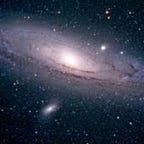What Are Stars?
You may know that the sun is a star and there are hundreds of stars in the night sky but do you know how they work? Why do they get hot? How big they actually are? Why they are so bright and how and why do they die? Find out in this article.
How do stars work? During most of a star’s active life, it is run by hydrogen fuel being converted into helium due to thermonuclear fusion. Thermonuclear fusion in simple terms is a reaction where the fusion of two light atomic nuclei into a single heavier nucleus by the collision of two interacting particles at extremely high temperatures. This releases a lot of energy and is happening thousands of times per second.
Why do stars get hot? Most stars get hot because hydrogen is being converted into helium in a process (thermonuclear fusion) that gives out heat and energy. The inside of a star is millions of degrees which warms the outer edges of the star. Wouldn’t wanna go in there!
How big they actually are? Stars are huge, for comparison our sun is 432,690 miles long which is 109 times the size of the earth. Stars come in a huge range of different sizes. Neutron stars can be anywhere from 12.5 miles to 25 miles in diameter. White dwarfs tend to be about the same size as earth. The largest supergiants on the other hand can be more than 1500 times larger than our sun!
Why are they so bright? Stars are so bright because thermonuclear fusion gives off so much energy and heat (the heat is what makes it bright). The cause of this energy is basically a bunch of nuclear bombs going off in the core of the star. This heats up the star a lot and makes it shine bright.
How and why do they die? First how they die. There are three ways that I know that they can die. The big ones can explode into a supernova. The really big ones can implode and collapse on themselves causing a black hole. Now, why do they die? They die because they run out of nuclear fuel (usually hydrogen) and can’t make any more helium and nuclear reactions.
Thanks for reading and sharing!
